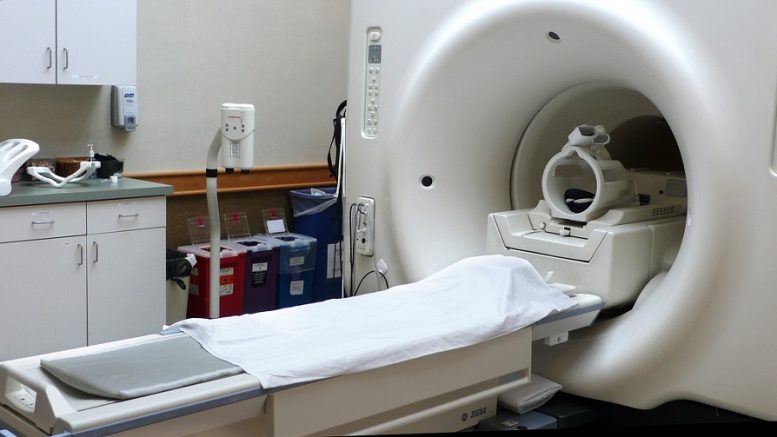Magnetic resonance imaging (MRI) is a medical machine that creates hyper-detailed imagery of the human body’s soft tissues and organs. It is typically used to diagnose diseases such as cancer. The machine is a small, tight fit that can make some people feel anxious and claustraphobic.
For the MRI to get the most detailed possible imagery, doctors inject subjects with a drug known as Constant Agent. Constant Agent should improve the visuals of the organs and tissues.
Here’s where things get tricky. Research from as recent as 2014 shows that constant agent bypasses the brain’s blood barrier and leaves behind a possible toxic ingredient. (source)
The ingredient left behind is a compound called Gadolinium-based contrast agents (GBCAs). The metal extracted from this compound is gadolinium. And this is where the potential trouble begins. Scientists have long believed that MRI patients body’s ridded themselves of GBCA following the MRI process. And beyond that, no substantial amounts remained. At least not enough to serve as harmful. In 2006, two Eurpopean studies condemned GBCA as having a link with nephrogenic systemic fibrosis in pateints suffering from renal cancer. The FDA reacted with warnings in 2006 and 2010 regarding gadolinium. Another recent study showed that gadolinium does in fact, remain in the body long beyond the MRI date.
A paper written by researchers at the University of Pittsburgh investigated the dangers of gadolinium and MRI’s, as well.
“At this stage, we now have clear evidence that the administration of various GBCAs results in notably varied levels of accumulation of residual gadolinium in the brain and bones of patients, even those with normal renal function,” wrote the authors in their published paper.




After having numerous MRI’s w/ contrast over the last 30 yrs for back issues, I contracted Renal cancer ..